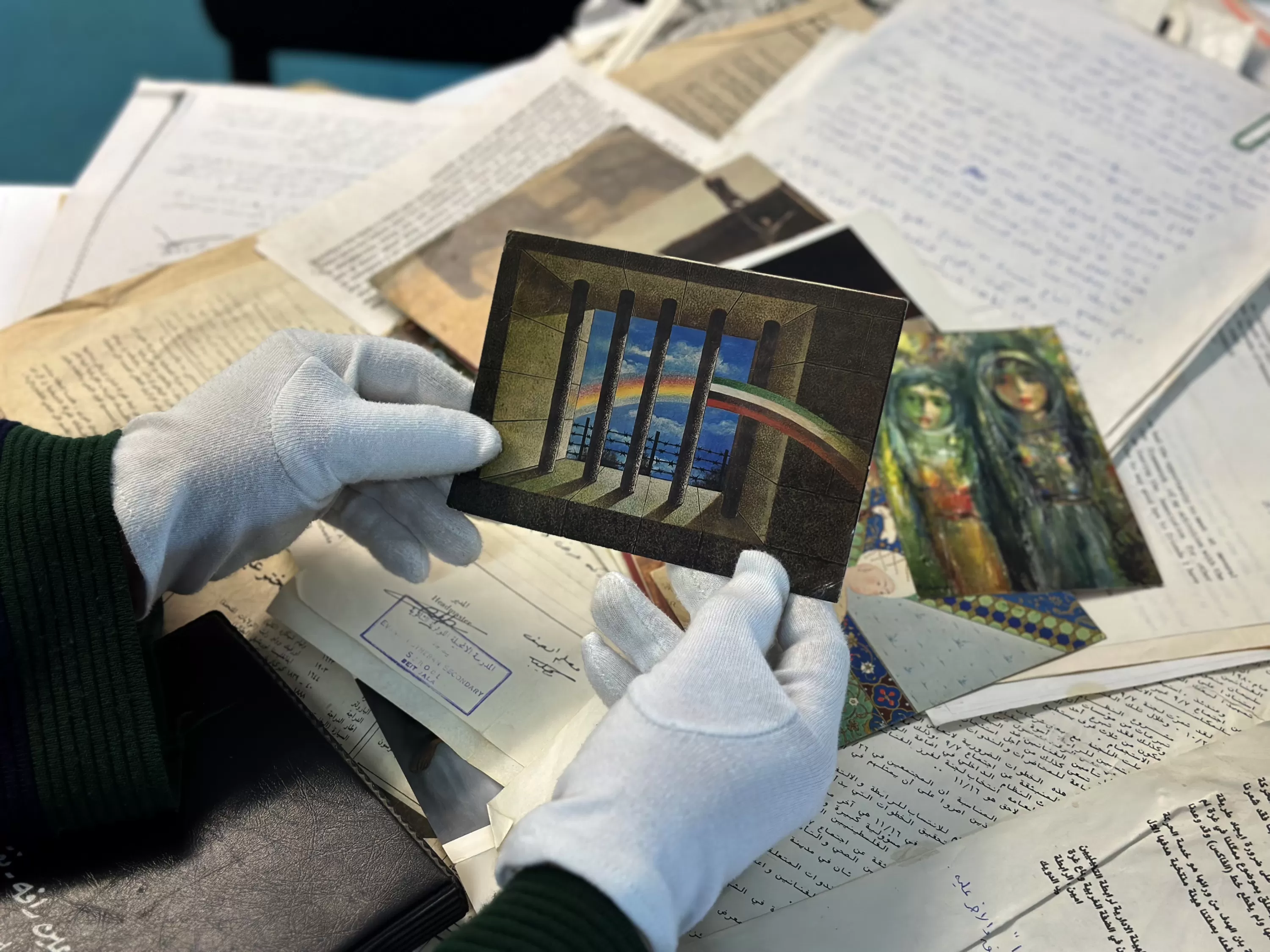
The Palestinian Museum has announced the release of over 6,000 archival items on its website as part of the third phase of its Digital Archive Project, through which more than 19,000 items have been digitized, as part of its ongoing efforts to preserve and document Palestinian social history. The project was established in partnership with the University of California, Los Angeles (UCLA) Library, with support from the Arcadia Fund, while the third phase was completed with support from the Gerda Henkel Foundation.
This phase included the completion of descriptive metadata, biographies, translations, and linguistic proofreading for 23 archival collections, including 17 new collections and 6 previously published ones, all of which are now accessible to researchers and the public through the Museum’s website.
The new collections feature rare and rich materials documenting prominent Palestinian cultural and artistic figures, including: Sliman Mansour, Mohammad Sabaaneh, Khadijeh Habashneh, Mahmoud Hammad, Wael Zwaiter, Tayseer Barakat, and Yousef Al-Astal. Institutional collections include Atassi Gallery, Al Fajer Group, Tiraz: Widad Kawar Home for Arab Dress, and Aslan Factory for Traditional Tiles. Other collections document Palestinian social history through the archives of Saleh Abdel Jawad, Nizar Hassan, Tareq Al-Bakri, Ahmad Rami Ash-Shawwa, the Dajani family, among others. Additionally, six collections from earlier phases have been completed, including: Nuha Batshon/ The Gallery, Rima Nasir Tarazi, the Khalil Sakakini Cultural Center, George Al-Ama, Husni Radwan, and the Martyr Khaled Nazzal collection.
In addition to archiving and publishing these collections, the project team implemented complementary improvements to facilitate access and enhance user experience. These included adding a new section titled "Other Archives" to introduce related digital archives, as well as updating metadata for some collections to ensure accuracy and clarity.
The Museum also continued expanding its network of collaborations with local and international cultural and academic institutions, offering its expertise in digitization and archiving, and responding to numerous requests to use archival materials in research, publications, programs, and artistic events, in line with its commitment to making knowledge accessible and enhancing public access to Palestinian history through a secure and open digital platform.
Today, the Digital Archive contains more than 369,600 archival items documenting various aspects of Palestinian social history, gathered from individuals and institutions across historic Palestine, as well as from archives in Lebanon and Jordan. The platform enables users to search, browse, save, and retrieve details about these materials, making it an important and accessible knowledge resource for all.
The archival materials include personal, family, artistic, and institutional collections belonging to writers, artists, cultural institutions, newspapers, magazines, professional associations, and others. The Palestinian Museum Digital Archive is one of the Museum’s most significant ongoing digital initiatives, launched five years ago to safeguard materials at risk of loss, including documents, photographs, memoirs, artworks, recordings, and audiovisual materials.
Commenting on the project, Palestinian Museum Director General Amer Shomali said: “The Digital Archive serves as a reference through which key milestones in Palestine’s history can be read; a preserved digital memory for future generations. Our lives, along with the buildings, places, and people around us, are under constant threat of destruction, looting, or erasure. In a reality where all components of our existence are endangered, the importance of the Digital Archive as a tool to safeguard our identity and collective memory only grows. Every document, photograph, or video we archive may one day become an invaluable historical testimony to our existence, even if its importance is not immediately apparent at the moment of archiving”.